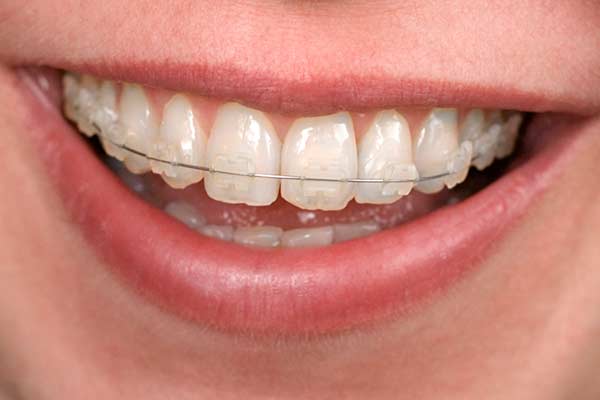Your Guide to Cumming Invisalign: Straightening Teeth with Style and Comfort
Your Guide to Cumming Invisalign: Straightening Teeth with Style and Comfort
Blog Article
Comprehensive Guide to Orthodontics Procedures for Fixing Dental Misalignments
Comprehending the ins and outs of each procedure, including their mechanisms, advantages, and possible disadvantages, is essential in making informed choices regarding one's orthodontic treatment. As we browse with the extensive overview to orthodontic treatments for fixing oral imbalances, the intricate information of each technique will unravel, shedding light on the course toward a unified and practical dental placement.
Orthodontic Procedures Introduction

Regular adjustments and monitoring are important parts of orthodontic treatment to make sure development is on track and to make any kind of essential alterations along the means. By going through orthodontic treatments, individuals can not just accomplish a straighter grin however likewise enhance their general oral health and wellness and function.
Standard Braces: Exactly How They Work
When considering orthodontic therapies for oral imbalances, traditional braces stand out as a reliable technique for correcting teeth placing. Conventional dental braces contain braces, wires, and bands that interact to use continuous stress on the teeth, gradually relocating them right into the preferred placement. The brackets are attached to the teeth making use of a special adhesive, and the cables are threaded with the brackets. By changing the stress of the wires, orthodontists can regulate the direction and force used to each tooth, guiding them into correct alignment in time.
As stress is used to the teeth via the dental braces, the bone surrounding the teeth is reshaped to sustain the new tooth positions. Clients will need routine modifications at the orthodontist's office to guarantee the braces continue to use the proper stress for efficient teeth movement.
Invisible Aligners: Disadvantages and pros
Unseen aligners use a discreet and convenient choice to standard braces for fixing dental misalignments. These clear, tailor-made trays are essentially unnoticeable when worn, making them an appealing alternative for individuals seeking a much more visually pleasing orthodontic therapy. Among the main advantages of invisible aligners is their removability, permitting less complicated upkeep of oral health compared to typical braces. Clients can eliminate the aligners before consuming or cleaning their teeth, decreasing the risk of food obtaining stuck in the home appliance and simplifying the cleansing procedure.

Surgical Orthodontic Options
Surgical treatments in orthodontics present practical options for dealing with complex oral imbalances pop over here that may not be efficiently dealt with through conventional orthodontic therapies. While unnoticeable aligners and next page traditional braces can deal with lots of orthodontic problems, certain instances need surgical intervention to achieve ideal outcomes. Surgical orthodontic choices are commonly advised for serious malocclusions, significant jaw disparities, and situations where the underlying bone structure requires modification to attain appropriate alignment.
One usual surgical orthodontic treatment is orthognathic surgical treatment, which involves repositioning the jaws to correct practical issues such as problem chewing or talking. This surgical procedure is commonly performed in cooperation with an orthodontist who assists align the teeth before and after the treatment. Surgical orthodontics may additionally involve treatments to expose influenced teeth, remove excess periodontal tissue, or improve the jawbone to create an extra unified facial account.
Before considering surgical orthodontic alternatives, clients undertake an extensive evaluation to identify the need and potential advantages of such interventions. cumming invisalign. While surgical treatment might seem complicated, it can significantly enhance both the feature and aesthetic appeals of the smile in instances where conventional orthodontic treatments fail
Retainers and Post-Treatment Treatment

Failure to comply with post-treatment care directions can result in relapse, where the teeth progressively relocate back towards their original placements. Regular retainer wear, great oral health, and routine dental check-ups are essential for keeping the outcomes achieved via orthodontic surgical procedure and making sure the long-lasting stability of the dealt with oral alignment.
Verdict
In verdict, orthodontic procedures offer numerous choices for fixing oral misalignments. Traditional dental braces utilize metal braces and wires to change teeth into correct positioning. Invisible aligners give an even more discreet option however might not appropriate for all cases. Surgical orthodontic alternatives are offered for much more extreme misalignments. Retainers are commonly utilized post-treatment to keep the brand-new placement. In general, orthodontic procedures can successfully improve dental wellness and aesthetic look.
As we browse via the extensive overview to orthodontic procedures for remedying oral misalignments, the complex information of each method will unfold, losing light on the course toward a unified and useful oral alignment. - invisalign
One of the most usual orthodontic treatments is the use of dental braces, which consist of metal brackets and cables that use mild stress to progressively shift teeth into the preferred position.When thinking about orthodontic therapies for oral imbalances, conventional braces stand out as a time-tested method for correcting teeth placing. Additionally, unseen aligners may not be ideal for complex orthodontic issues that need even more significant teeth activity, as they are commonly advised for moderate to modest instances. Retainers are tailor-made orthodontic devices developed to hold teeth in their remedied positions after the completion of orthodontic treatment.
Report this page